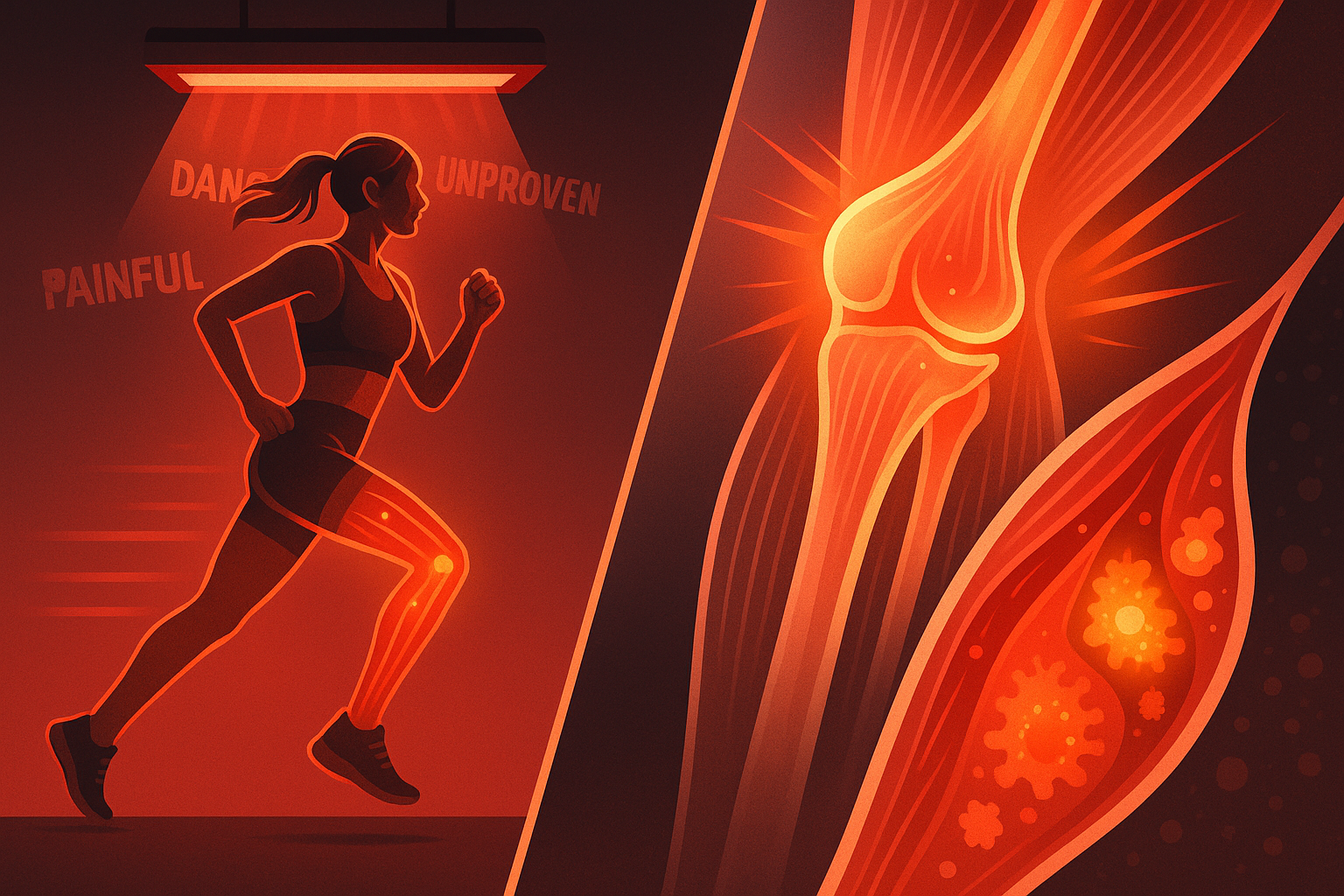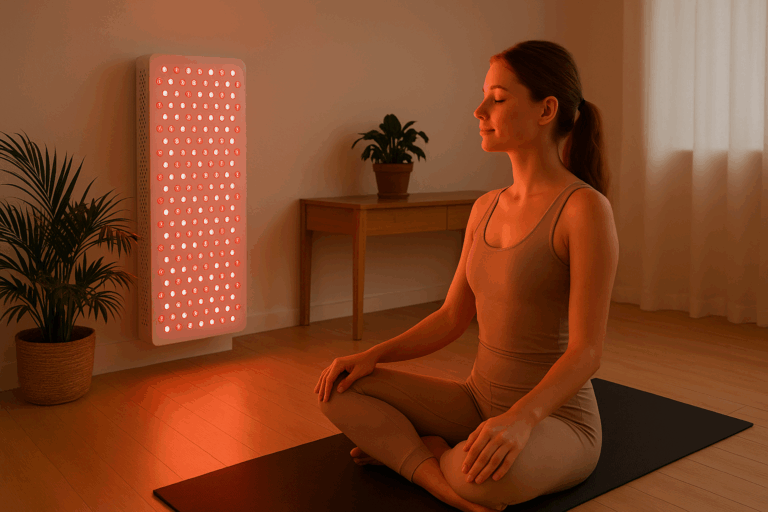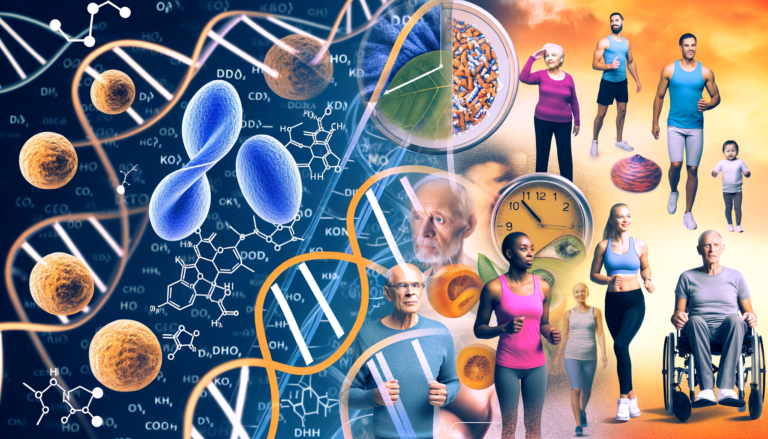Athletes and fitness enthusiasts are always searching for safe, effective ways to enhance recovery and performance. While traditional methods like ice baths, massage, and compression therapy remain popular, Infrared Light Therapy for Muscles (ILT) has emerged as a cutting-edge tool for reducing muscle soreness, accelerating repair, and improving endurance.
But does it really work? And how can athletes use it effectively?
In this article, we’ll explore:
✔ How ILT speeds up muscle recovery (with scientific evidence).
✔ Best practices for athletes (timing, wavelengths, devices).
✔ Real-world success stories (pro athletes using ILT).
✔ How to incorporate ILT into your training routine.
How ILT Enhances Muscle Recovery & Performance
1. Reduces Inflammation & Oxidative Stress
Intense exercise causes micro-tears in muscle fibers, leading to inflammation and delayed-onset muscle soreness (DOMS). ILT, particularly near-infrared (NIR: 810–850 nm), penetrates deep into tissues to:
• Lower pro-inflammatory cytokines (TNF-α, IL-6).
• Increase antioxidant enzymes (superoxide dismutase) to combat oxidative stress.
📌 Study: A 2016 Journal of Athletic Enhancement trial found NIR reduced DOMS by 47% in weightlifters vs. placebo.
2. Boosts ATP Production for Faster Repair
ILT stimulates mitochondria (the cell’s energy factories) to produce more ATP, the fuel muscles need to regenerate.
• Red light (660 nm) enhances surface-level recovery (skin, minor strains).
• NIR (810–850 nm) reaches deeper muscle layers for tendon/ligament repair.
📌 Study: A 2020 Frontiers in Physiology paper showed 30% faster recovery in cyclists using ILT post-ride.
3. Increases Blood Flow & Oxygenation
ILT dilates blood vessels, improving circulation to deliver more oxygen and nutrients to fatigued muscles.
• Far-infrared (FIR) saunas are used pre-workout to enhance flexibility.
• NIR post-workout flushes out lactic acid faster.
4. Enhances Performance & Endurance
• Pre-Workout: FIR saunas (15 min before training) improve VO2 max and endurance (European Journal of Applied Physiology, 2018).
• Post-Workout: Red/NIR reduces muscle fatigue, allowing for more frequent high-intensity sessions.
Best ILT Protocols for Athletes
1. Device Selection
|
Goal |
Recommended Device |
Wavelength |
|
General Recovery |
Full-body panel (Joovv, MitoRed) |
660nm + 850nm |
|
Targeted Pain Relief |
Handheld (FlexBeam, Tendlite) |
810nm |
|
Pre-Workout Warmup |
FIR sauna (HigherDOSE, Clearlight) |
Far-infrared |
2. Timing & Dosage
• Pre-Workout (FIR Sauna): 10–15 min at 60°C to boost blood flow.
• Post-Workout (Red/NIR): 10–20 min at 6–12 inches from skin.
• Injury Recovery: 2x/day (morning/night) for 5–10 min per area.
3. Pro Tips
• Combine with cryotherapy (alternate ice baths + ILT for elite recovery).
• Hydrate! ILT increases metabolic demand—drink electrolytes.
• Consistency matters: 3–5x/week for cumulative benefits.
Athletes Using ILT (Success Stories)
• LeBron James: Uses red light therapy for muscle recovery.
• UFC Fighters: NIR devices like FlexBeam reduce swelling between rounds.
• Olympic Cyclists: FIR saunas pre-race for endurance gains.
Potential Limitations
• Not a magic fix: ILT works best alongside nutrition, sleep, and stretching.
• Overuse risk: Too much can cause temporary redness (stick to protocols).
Final Thoughts
Infrared Light Therapy for muscles is a game-changer for athletes seeking faster recovery, reduced soreness, and enhanced performance. By leveraging red (660nm) and NIR (810–850nm) light, you can optimize muscle repair and train harder—safely and naturally.
Ready to try it? Start with a targeted handheld device or 10-minute panel sessions post-workout. Track your recovery time—you might be surprised by the results!







